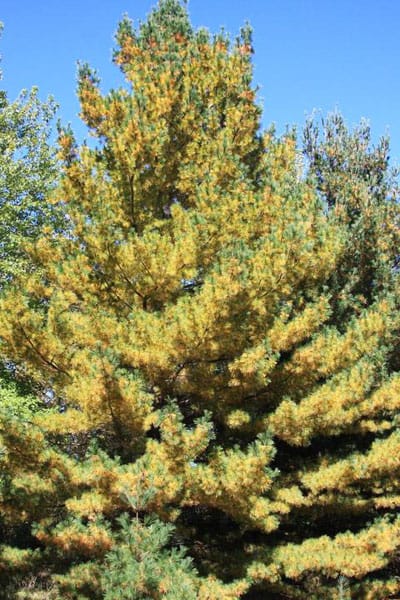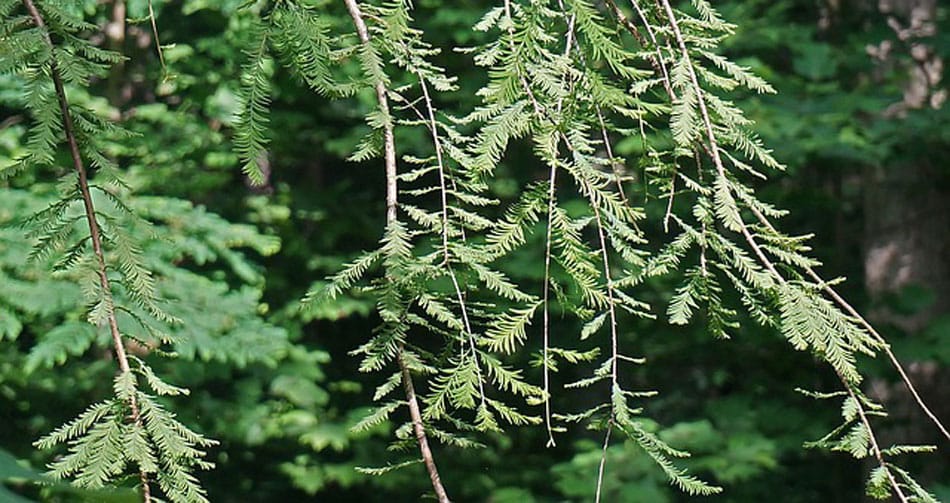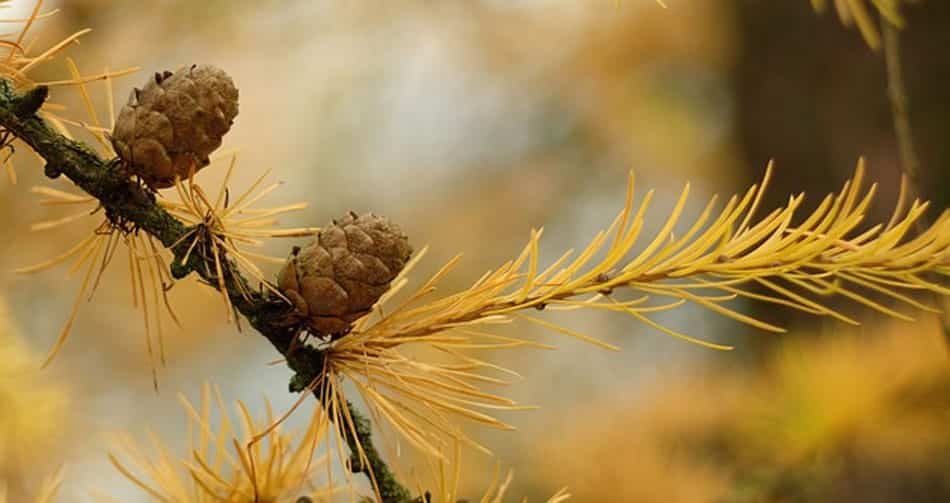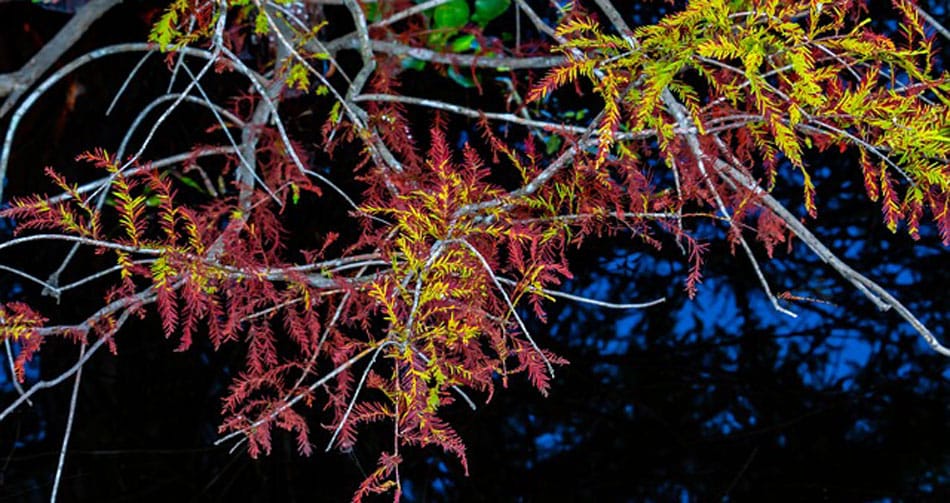As fall approaches, we’re used to seeing trees like maples and oaks change color and the leaves falling to the ground, blanketing your yard. But what if you notice evergreen needles (from trees like pine, spruce, fir, yew or arborvitae) on the ground as well? What do yellowing and dropping needles mean for your conifers?
Don’t panic. Most conifers do lose needles in the fall, just like deciduous trees lose their leaves. Although these trees are usually referred to as “evergreen” trees, that doesn’t mean all needles on the tree stay perpetually green. Some will yellow, die, and fall off the tree.
However, unlike deciduous trees that lose all of their leaves at once, healthy evergreens always have some needles on the tree, retaining their overall green appearance even throughout winter.
How can I tell if it’s normal autumn needle drop or something worse?
While some fall needle loss is normal, there are instances where needle loss can signal a pest issue or disease that needs professional attention.
First, check which needles are turning yellow and being dropped. If they are the older needles on the inside parts of your conifer tree, and the yellowing is spread evenly from top to bottom, then the tree is fine. It’s normal for your tree to lose some of the previous years’ needles during the fall months.
However, if the newer needles at the tips of the branches are turning brown and dropping, or if needle loss is happening at other times of year, then your tree might need to be inspected by an arborist to determine what’s wrong.
The other thing to look for is whether your tree still appears green from a distance. If it does, that’s a good sign. But if you notice patches that are brown or orange or that are missing needles, that may be a cause for concern.

White pines can turn dramatically yellow in fall. Even this much yellowing is normal.
Image by Steven Katovich, Bugwood.org
Does weather affect needle loss in conifers?
Drought and heat stress can affect your conifer’s needles, turning them brown and making them drop prematurely. These conditions can also make fall needle drop more obvious; trees under stress will drop more needles.
Make sure that your tree is getting enough water if there has been a drought or prolonged period of hot weather.
Is fall needle drop worse in some kinds of trees?
The fall loss of needles is usually more obvious on mature white pines than on other conifers. Often, the whole tree can look yellow. White pines only retain the current year’s needles while shedding the previous two years of growth (so there are more yellow than green needles on the tree). It may look alarming but it’s perfectly normal.
Do all conifers lose needles in fall?
All of the above information is applicable to conifers such as pine, spruce, and fir. There are a few types of conifers, however, that lose all of their needles each fall.
Conifers get their name because they have cones (for instance, a pinecone on a pine tree). Not all conifers are evergreen, however. Some are deciduous, which means that they lose their needles in the fall, just like maple and oak trees lose their leaves.
Dawn Redwood
Native to China, Metasequoia glyptostroboides, or Dawn Redwood tree, grows quite well here in eastern Pennsylvania or New Jersey (it’s hardy up to zone 5). It grows quickly, reaching heights of up to 90 feet. If you want to see some in person, you can visit three in Central Park in New York City, in a section called Strawberry Fields that was dedicated to John Lennon. The three dawn redwood trees symbolize eternal renewal because of their needle drop – they lose their needles each fall and then regrow them each spring.

Dawn redwood needles stay green throughout the growing season but drop in fall
Larch (also called tamarack)
European larch is commonly planted in the northeastern United States, and its needles turn a bright yellow before dropping every year.
American larch, also called tamarack, is another variety, and has the same bright yellow needle drop every fall. Tamarack does not do well in shade, and its thin bark makes it highly flammable.

Larch needles turn a gorgeous yellow in autumn before dropping from the tree
Bald Cypress
Native to the southeastern USA and typically found in swampy areas, bald cypress (Taxodium distichum) is remarkably hardy (up to zone 4) and tolerant of a range of soil conditions (including dry conditions).
They also drop their needles (usually in winter) and grow them again in spring.

Bald cypress needles display a rainbow of colors in autumn
The Bottom Line on Conifer Needle Loss
Overall, yellowing or browning and dropping needles in the fall is a normal part of a conifer’s growth cycle. Enjoy them as part of the changing of the seasons.
Be sure to note, though, if large sections of needles are changing color or dropping during other parts of the year.
You can always contact Organic Plant Care in Flemington, NJ to schedule a tree consultation. Our ISA Certified Arborists can determine if your conifers are healthy and come up with a plan to keep them that way.
GET THE LATEST NEWS
Subscribe to the Organic Plant Care Newsletter and get timely and helpful tips and updates monthly.
There's no spam - we promise!





